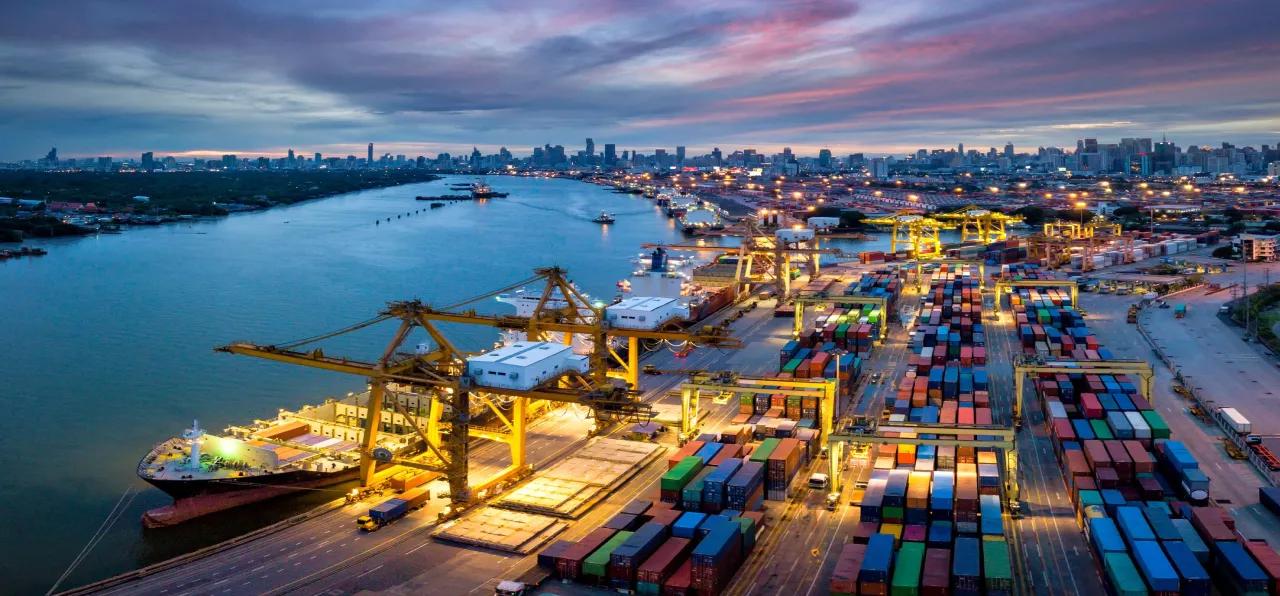
The latest
Over recent weeks, tensions between the United States and China have intensified, culminating in the U.S. threatening to impose an additional 100% tariff on Chinese imports starting November 1, alongside expanded controls on critical software exports.
Markets initially responded with a sharp risk-off shift, but a more measured tone from President Trump and China’s apparent reluctance to escalate further—despite intermittent flare-ups—helped restore a degree of calm. Nonetheless, this episode serves as a stark reminder of the latent risks in trade relations, an area that had faded from the macro spotlight, and has jolted market complacency.
Background
U.S. tariffs on Chinese goods had stabilized at approximately 54%, comprising a 30% increase atop pre-existing 24% levies. However, in late September, the U.S. announced a significant expansion of its export control regime, with major implications for Chinese firms’ access to U.S. technologies.
In response, China declared a substantial expansion of its own export controls, particularly targeting rare earth minerals—a critical input for AI development. Notably, China dominates this space, controlling over 90% of global supply. Given the concentration of tech in U.S. equity markets and the pivotal role of AI-related capex in supporting U.S. growth, this move poses a material threat to both the U.S. economy and markets.
Conversely, China remains heavily reliant on U.S. chipmaking equipment, and Beijing’s ongoing economic fragility suggests it too is ill-positioned for a prolonged trade war.
Forward-looking implications
Tariffs had largely receded from macro strategy discussions, owing to perceived stability and limited economic impact. However, the proposed 100% increased tariff would have significant potential impacts moving forward.
Tariff impact: A 100% levy would raise the effective China tariff to ~155%, lifting the U.S. average effective tariff rate from ~13% to nearly 30%—the highest in over a century, even surpassing post–Liberation Day levels.
Economic hit: Preliminary estimates suggest a ~3% drag on U.S. GDP and inflation breaching 4%, well above the Fed’s 2% target. Even if treated as transitory, the magnitude would likely compel a more cautious Fed stance.
Trade embargo risk: Such a steep tariff could trigger a de facto trade embargo. Following the April announcement of a 145% tariff, container traffic from China to the U.S. collapsed, raising fears of supply chain disruptions and empty shelves.
China’s vulnerability: While the U.S. would suffer, China’s export-dependent economy would also face significant strain, particularly amid domestic economic weakness.
Fiscal repercussions: A breakdown in trade could severely dent U.S. tariff revenues, potentially refocusing investor attention on fiscal deficits and exerting upward pressure on long-end Treasury yields.
Strategic outlook
The severity of a renewed trade war increases the probability of eventual compromise. However, a return to the previous status quo appears unlikely. President Trump may be recognizing China’s leverage in rare earths, potentially prompting a more conciliatory approach to re-engage negotiations.
The path to compromise is expected to be volatile. Further escalation remains possible, and even post-resolution, tariffs and non-tariff measures (such as export controls and investment restrictions) are poised to remain a key geopolitical lever, especially as the U.S. and China continue their strategic rivalry in AI and technology. Trade frictions are likely to persist as a feature of the global macro landscape.
Market outlook
Renewed tensions have exposed market fragility, particularly given stretched valuations and elevated sensitivity to growth shocks. Investor complacency around tariffs has been disrupted, prompting a reassessment of risk.
While a compromise is anticipated, markets may remain jittery in the near term. End-of-cycle concerns are mounting, and the government shutdown has created a data vacuum that amplifies uncertainty. Still, the broader macro backdrop remains constructive: resilient growth, underpinned by policy support (monetary and fiscal) and sustained transformative technology investment, suggests markets can withstand setbacks. Distinguishing between idiosyncratic and systemic shocks is crucial.
In this uncertain environment, a balanced, diversified approach remains essential—staying constructive on risk assets where fundamentals warrant, while managing valuation risks and maintaining portfolio resilience.
Investing involves risk, including possible loss of principal. Past performance is no guarantee of future results.
Views and opinions expressed are accurate as of the date of this communication and are subject to change without notice. This material may contain ‘forward-looking’ information that is not purely historical in nature and may include, among other things, projections and forecasts. There is no guarantee that any forecasts made will come to pass. Reliance upon information in this material is at the sole discretion of the reader.
The information in the article should not be construed as investment advice or a recommendation for the purchase or sale of any security. The general information it contains does not take account of any investor’s investment objectives, particular needs, or financial situation.
Insurance products and plan administrative services provided through Principal Life Insurance Co. Principal Funds, Inc. is distributed by Principal Funds Distributor, Inc. Securities are offered through Principal Securities, Inc., 800‐547‐7754, Member SIPC and/or independent broker/dealers. Principal Life, Principal Funds Distributor, Inc., and Principal Securities are members of the Principal Financial Group®, Des Moines, IA 50392.
4913688


